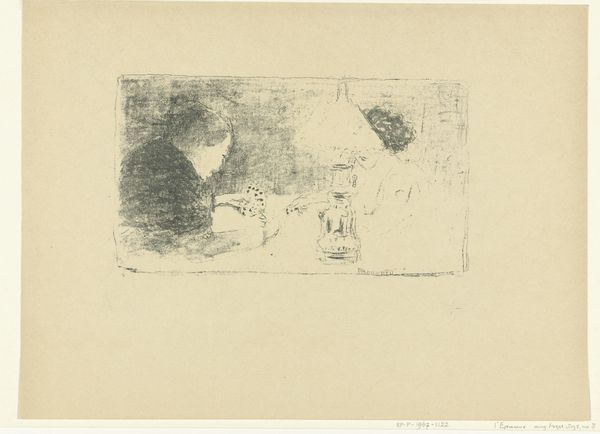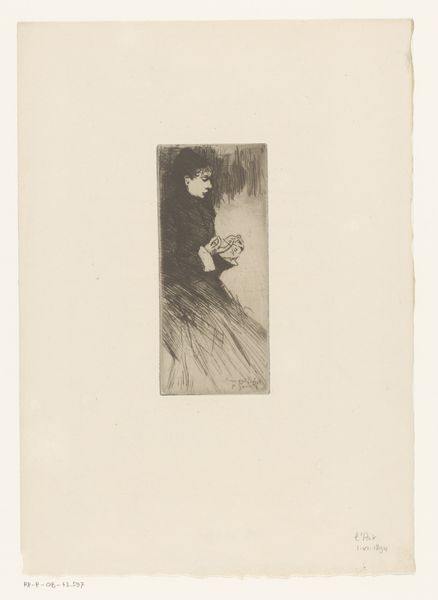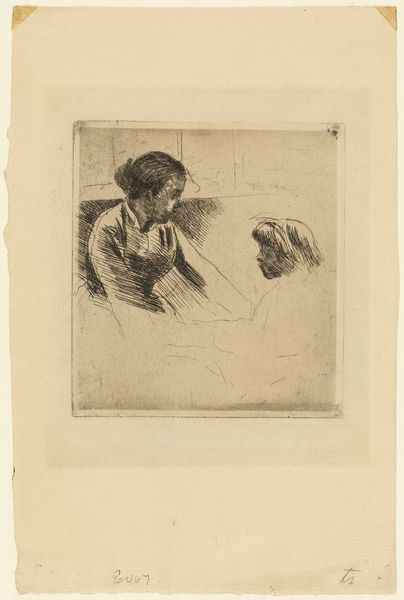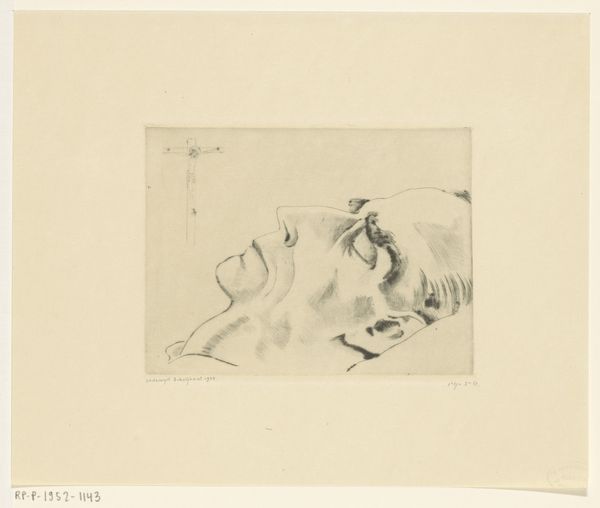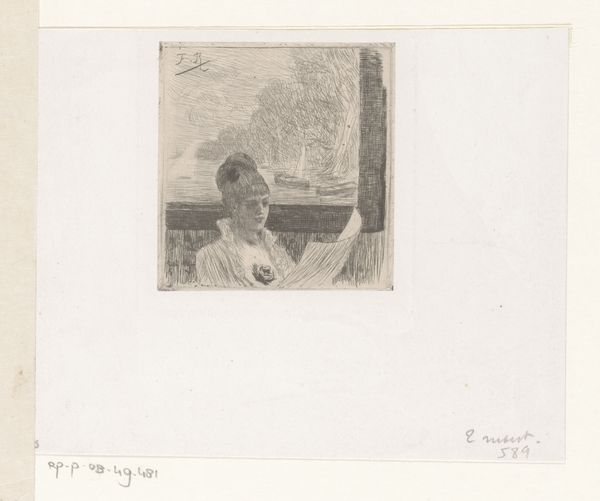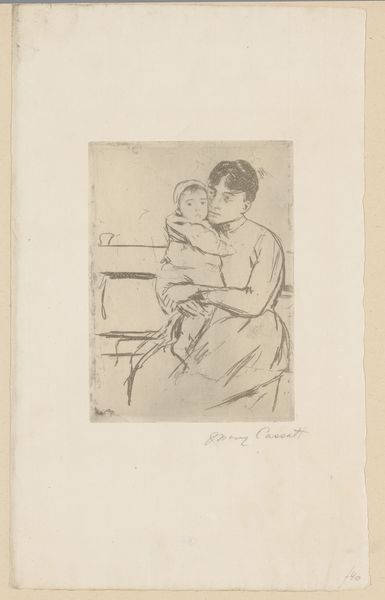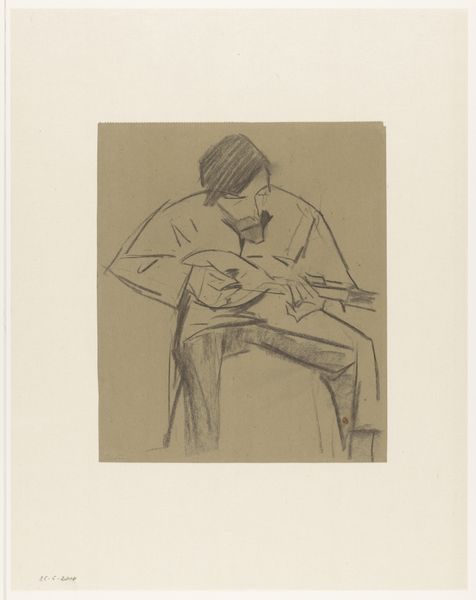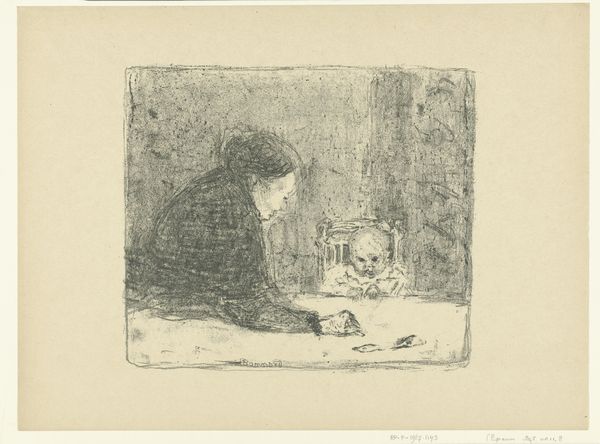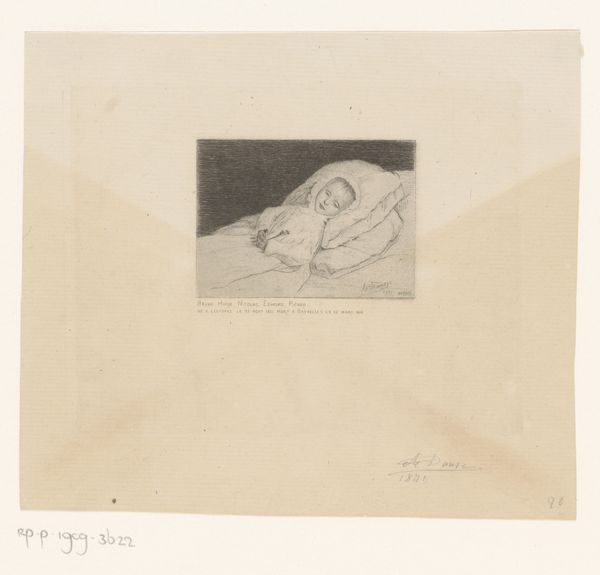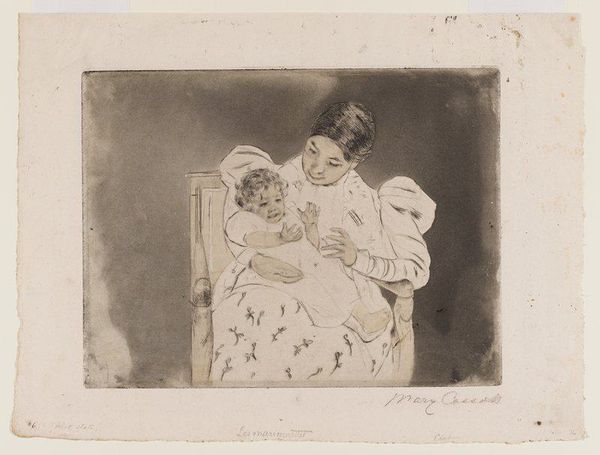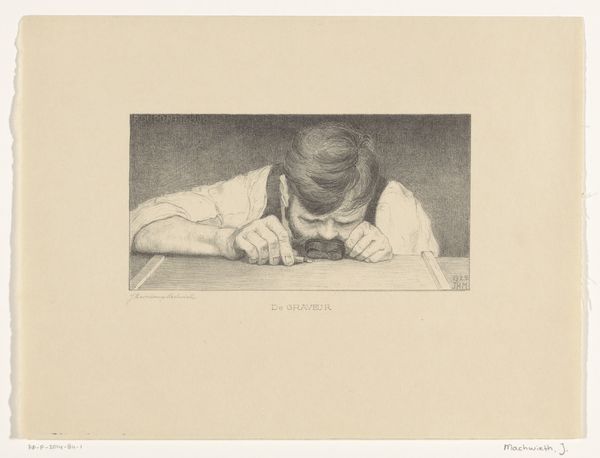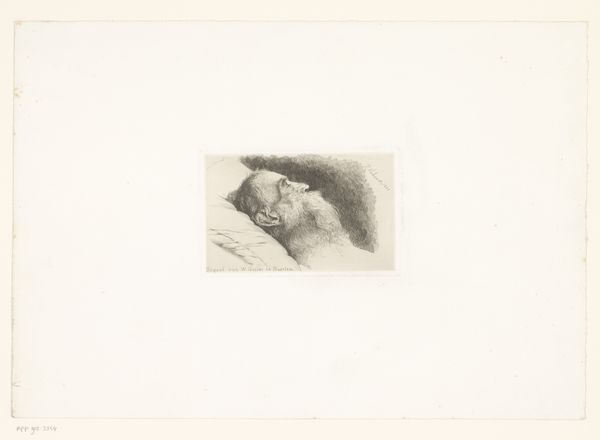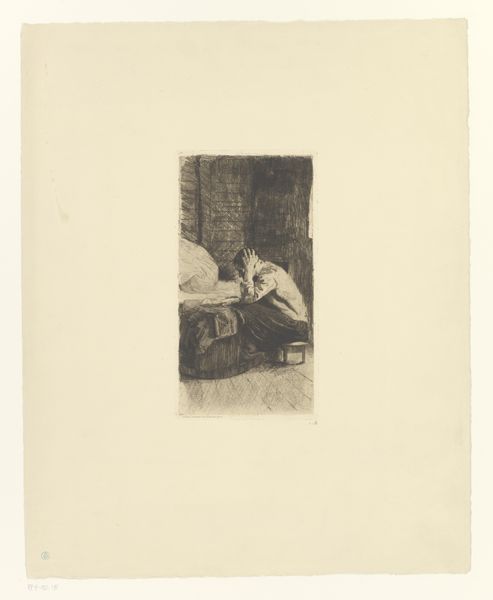
drawing, print, etching, paper, graphite
#
portrait
#
drawing
#
art-nouveau
# print
#
etching
#
paper
#
graphite
Dimensions: height 99 mm, width 120 mm
Copyright: Rijks Museum: Open Domain
Curator: What strikes me first is the palpable sense of intimacy—we’re witnessing a private moment of concentration. Editor: Indeed. The artwork is entitled "Portret van Jules Pascin," made sometime between 1900 and 1932 by Emil Orlik. It's a drawing, specifically an etching in graphite on paper. Curator: The use of etching creates such delicate lines. To me, it's reminiscent of late Art Nouveau aesthetics, all elegant simplicity. It gives the subject an ethereal feel. Editor: You're right about that simplicity. Pascin, hunched over his work, looks utterly consumed, the light catching the sharp planes of his face. This is a portrayal of the artist, by the artist, immersed in the act of creation. And think about what is signified here, too, with him holding the very instrument of creativity between his fingers! Curator: It makes you wonder, though, about the relationship between the two artists. What dynamics were in play? The angle almost seems… invasive? Was it supposed to be? Or just candid? And it makes me reflect upon what kind of artist is captured, his ethnicity, what kinds of gender assumptions and expectations did Pascin break? These, and the social currents they would have had to navigate? Editor: I think the fact that Pascin is an artist in that early modernist period certainly complicates assumptions of identity, of creative drive as tied into other sorts of personhood. Still, the visual elements communicate certain aspects clearly—the soft line drawing and how they make Pascin look somewhat brooding, melancholy even? He certainly fits the image of the tortured artist in that moment! Curator: Maybe… though I would urge us to not give too easily into the artist as "tortured soul" trope, especially in that era. In doing so, aren't we still reinforcing very outdated myths of genius? Editor: Perhaps we are. Ultimately, though, what stays with me is this powerful depiction of focused attention and concentration by representing some cultural notions associated with creativity. Curator: For me, it raises critical questions about visibility, representation, and the power dynamics embedded in portraiture during an intense period of art historical change and challenge.
Comments
No comments
Be the first to comment and join the conversation on the ultimate creative platform.
